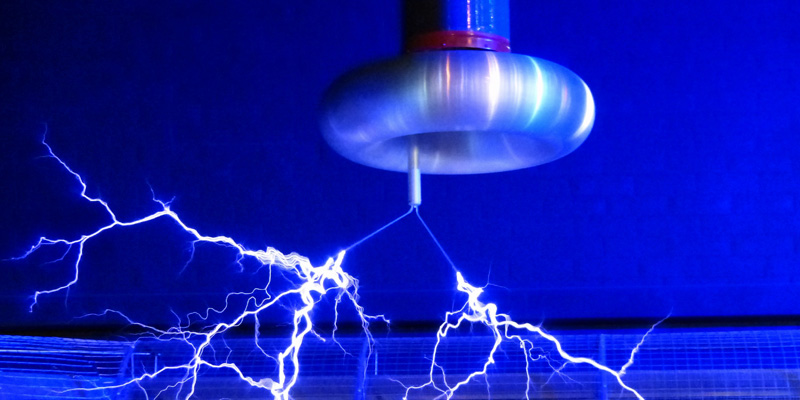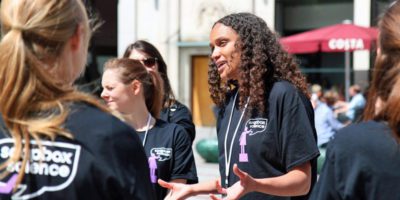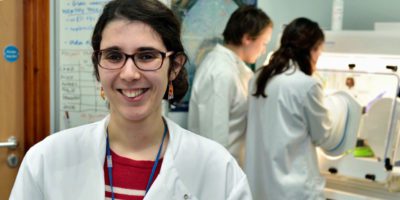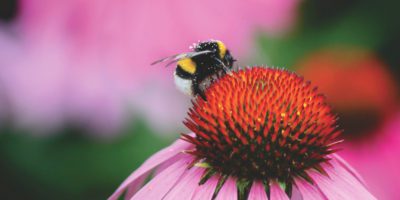Dr. Philippa Shepley is a postdoctoral research fellow at the University of Leeds. Her research focuses on the physics of magnetic and piezoelectric materials. Philippa is taking part in Soapbox Science with her sister, Rosie, a visual artist.
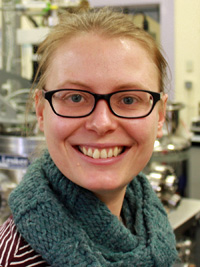
Philippa is speaking at the 2017 Leeds Soapbox Science event (date – TBC). The title of her talk is: “What has piezoelectricity ever done for us?”
Understanding the fundamental building blocks of the universe
When I was finishing school and deciding what I might like to do with my life, I was pulled towards physics by an idea that understanding the fundamental building blocks of the universe was the way to unlock some deep and zen-like understanding. More than ten years and a physics degree, a Ph.D. and two postdoc positions later, I’m none the wiser as to the secrets of life. Fortunately, my day to day adventures in the lab have been more than enough to make it all worth it.
I did my undergraduate degree at the University of Liverpool. We spent a lot of time in the undergraduate lab learning to do experiments and while I’d not been getting particularly bad marks, I found it difficult and stressful and didn’t enjoy it all that much. My first real taste of research was a summer project after my 2nd year, working in Dr. Vin Dhanak’s lab. I worked hard on the project and with a lot of guidance I built a small vacuum chamber to make very thin films of lead. I loved working in the lab. I learned so much that summer, and really caught the bug for research.
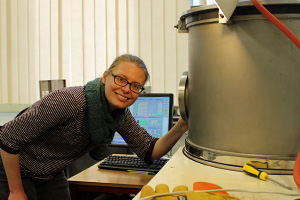
After my physics degree, I moved to start my Ph.D. at the University of Leeds, and I been here ever since. For my Ph.D. I studied the effects of stretching thin magnetic films on properties that could be useful for magnet-based computer memory and logic devices. I carried on the project for a year as a postdoctoral researcher before I moved from the School of Physics and Astronomy to Chemical and Process Engineering to work on piezoelectric materials.
Forget what you think about being a “scientist”
My job as a researcher is really varied. I use a much broader range of skills than you might expect when you think “scientist” – creativity and practical hands-on work have been just as import for me as sitting at my desk crunching numbers.
To do experiments I often need to design different methods and work with technicians to build new equipment. I usually spend about half of my time in the lab setting up experiments and taking data. The rest of my time is a mix of trying to analyse and understand the data (a lot of time spent writing computer code and peering at graphs with a furrowed brow), reading scientific journals to keep up with the latest in my field, and communicating my results by writing papers and going to conferences. My work is fuelled mainly by drinking tea.
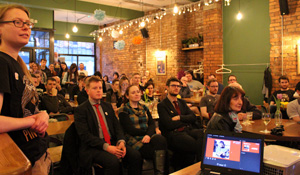
This year I’m co-ordinating the Pint of Science in Leeds. Pint of Science is a festival that’s been held every May for the last five years in pubs and bars around the world. We bring the public and scientists together in the pub for talks, live experiments and discussions. It’s a great chance for people to find out about the research that goes on in their city and it’s a pretty good night out for everyone involved.
Preparing for Soapbox Science
In my research, I’ve studied magnetic and piezoelectric materials, and while most people have a reasonably good idea of what a magnet is, fewer people have heard of piezoelectrics, even though we use them all the time! In my Soapbox Science talk I want to introduce people to the concept of piezoelectricity and talk about how we use these materials in loads of applications from the ignition on your gas cooker, through microphones and speakers, to SONAR and medical ultrasound.
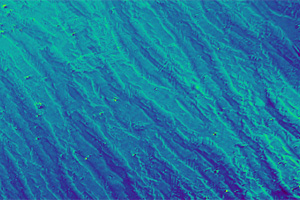
I’m used to talking about my research to other scientists and standing up to give talks at conferences, but standing up on my soapbox will be a completely different experience. Sometime the hardest concepts to explain are the fundamentals that you start to take for granted when you work on something every day, so I’ll be preparing for my talk by going back to basics and trying to break down the physics into some simple concepts.
The Art and Science project that Soapbox is running in Leeds has been really helpful for this – I’ve already had to think about my topic from a completely new perspective.
We are family. I’ve got my sister with me…
Soapbox Art and Science has given me an opportunity to work with my sister, Rosie, who’s a visual artist based in Glasgow. When I saw the call for scientists and artists it seemed like too good a chance to miss!
Rosie’s work as an artist has been moving more towards illustration and design, so a project like this that has a focus on distilling and communicating complex ideas is opening up new areas for her to draw inspiration from. Her experience of engaging the public in arts and heritage at House for an Art Lover in Glasgow is also really valuable for what we’re trying to do with Soapbox Art and Science.
For me, it’s important that science is part of our cultural life, not just something that happens hidden away in mysterious laboratories. The interface between the two worlds of art and science is there all the time, but is often not explicit or recognised. Scientific progress is linked to art through design of new products, and aesthetic qualities are often important to scientists when looking for the simplest and most elegant description of the natural world. Science relies on the ideas of design.
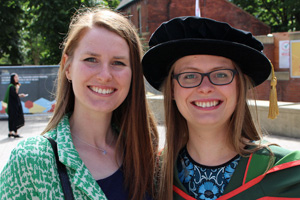
Working together, Rosie and I want to explore the art-science links and show how scientific ideas can be a fertile ground for inspiration for art, and look at how art can be used as part of a conversation about science.
Traditional craft is important in Rosie’s work and she will be using structural craft elements such as knitting in her work for the Soapbox Art and Science project. The mechanical properties of textiles made by knitting tie in to concepts in my work on piezoelectric materials, which stretch and change shape under an applied electric field. We’ll be working together to make some props for my talk that connect scientific explanations to the art Rosie is making.
Crafts like knitting follow from a tradition of work by women that can be thought of both as art and as textile engineering, but is often not recognised as a big part of the historical cannon of either discipline. We are drawing on this tradition and connecting with the work by women today in art as well as in science and modern engineering. Knitting requires an understanding of the structure and the physical behaviour of the yarn. This has a lot of parallels with what I do in my physics research, where I work to understand structural and electrical properties in a way that can be useful for engineering new products and devices.
Breaking down the barriers for girls in physics and maths
Having some level of scientific training can open up so many options, so it’s really important to keep this option open to girls. The Institute of Physics has done a lot of work recently looking at the barriers that prevent girls from continuing their education in physics and maths at A-level and beyond, and they provide a lot of research to help teachers lower the barriers.
Where girls are encouraged and feel confident in their abilities, they are more likely to pursue physics and maths. Changing perceptions of what it means to be a scientist, and giving people the chance to see women succeeding in science-related roles, can help to form a positive image for girls as they choose what to study.
Advice for girls and women who are interested in science but aren’t sure which route to take

Sciences can be difficult and challenging subjects, but that doesn’t mean you can’t succeed, and when you do solve that maths problem or understand how something works it’s really rewarding. If you’re interested in science but uncertain about what route to take, there are good opportunities to ask for advice at events like Pint of Science and Soapbox Science. Come along and scientists will be happy to chat!
Finding new problems … and new solutions
I’ve been lucky to work on some interesting research projects at Leeds, whilst also having the chance to do projects like Soapbox Science. Over my next couple of years at Leeds I’ll be looking for new research problems to solve and applying for funding to continue working in science.
http://www.stoner.leeds.ac.uk/people/person.php?ref=102
https://twitter.com/philippashepley
https://twitter.com/pintofscience

